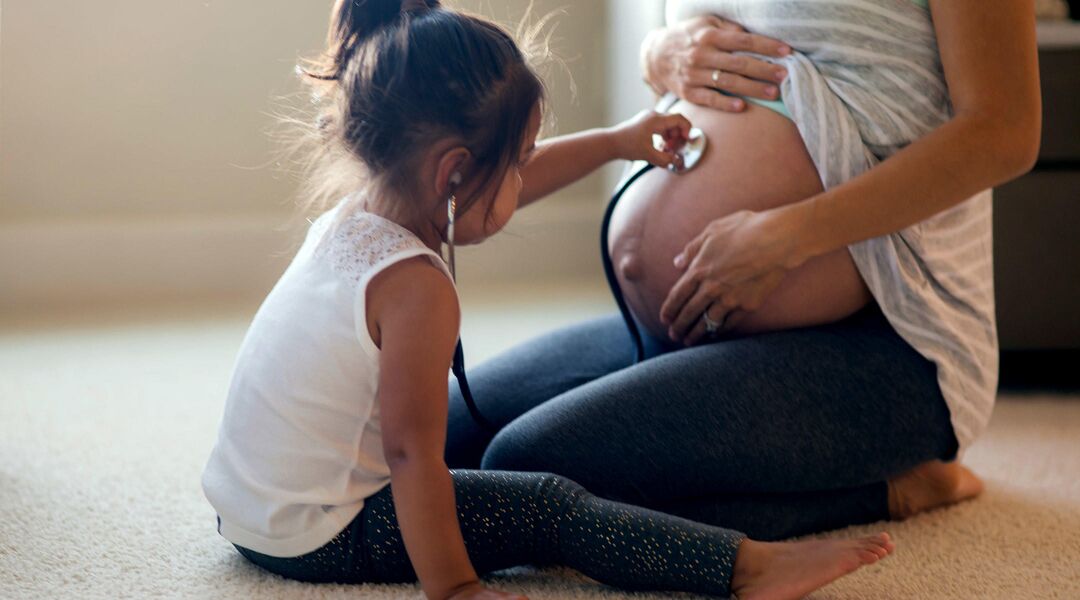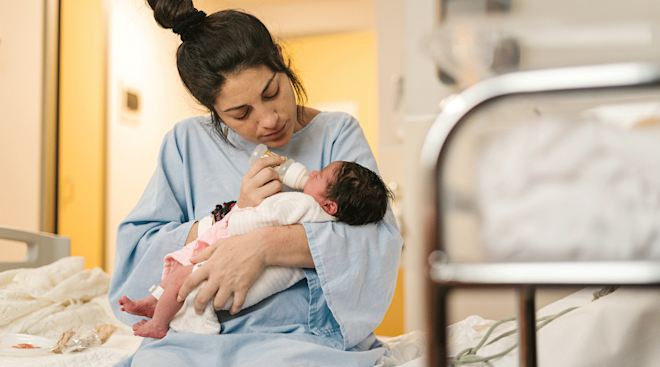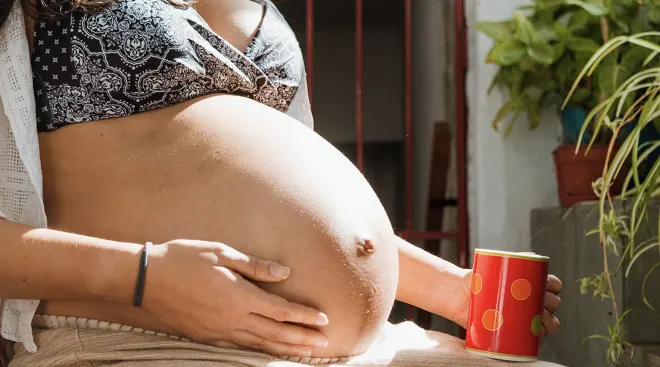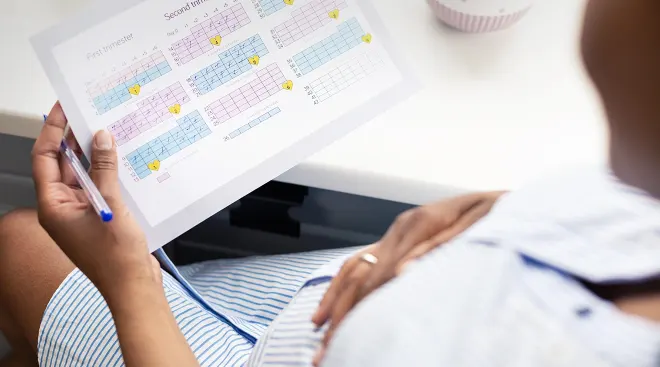How Baby’s Skin, Hair and Nails Develop in Utero
When you’re pregnant, there’s nothing more thrilling than tracking baby’s development week over week (except for when you get to actually see baby through an ultrasound). As a mom-to-be, you of course want to know what’s going on in there! Is your little one sporting a hairdo yet? Will he have your or your partner’s skin tone? Luckily, thanks to new technologies, doctors have a pretty clear picture of what babies look like at various stages of pregnancy, including how their skin, hair and nails develop. Here’s what’s happening inside your baby bump.
Newborns are known for their delicious, can’t-stop-kissing-it skin, but you might not realize that baby-soft suppleness is months in the making.
First trimester
At the microscopic level, the skin starts to develop very early on, possibly even before you find out you’re pregnant, says Joseph Ouzounian, MD, chief of the division of maternal-fetal medicine at the Keck School of Medicine of the University of Southern California. By week four, the fetus already has two distinct layers of skin: a bottom cell layer, known as the basal layer, and an outer layer called the periderm. But since at this point baby is teeny tiny (about the size of a poppy seed), this new formation of skin isn’t something you can see with the naked eye.
Second trimester
By the time you hit your second trimester at week 14, you can see the surface of baby’s skin on an ultrasound, says Desireé McCarthy-Keith, MD, MPH, a reproductive endocrinologist at Shady Grove Fertility in Atlanta, Georgia. At around week 19 of pregnancy, baby’s skin glands start to produce an oily, cheese-like substance called the vernix, which is designed to safeguard the skin against the surrounding, potentially irritating amniotic fluid. Vernix stays on baby’s skin right up through birth, when it can be rubbed or washed off.
Keep in mind, at this point in development baby’s skin looks nothing like what your child will be born with: Instead, it’s extremely thin and transparent, with the blood vessels clearly visible underneath. In fact, there’s zero skin coloration. “During the second trimester, all babies will look the same, no matter the race,” says Stephen Emery, MD, assistant professor of obstetrics, gynecology and reproductive sciences at the Magee-Womens Hospital of UPMC in Pittsburgh.
Third trimester
So when do babies get their skin color? It’s not until the third trimester, when fetal skin starts to harden and become less transparent, that pigmentation begins to develop. Still, all newborns, regardless of race, tend to have a red or bluish-purple hue to their skin at birth, since their circulatory system isn’t yet fully developed. “Baby’s true complexion doesn’t get finalized until after birth—maybe up until the first year of life,” Ouzounian says. That’s because cells called melanocytes become more active after birth, producing melanin, a pigment that forms skin color. Genetics then determine how dark or light baby’s skin will be.
Some babies are born with a thick head of hair, while others emerge with super-fine locks or none at all. But how much (or how little) hair your infant is born with—and what color it turns out to be—all boils down to genetics, and has nothing to do with when their hair begins to grow. In fact, fetal hair development starts at the same stage for every baby.
First trimester
Hair follicles start to form during week 14 of pregnancy, and by the 15th week, a hair pattern begins to appear on baby’s scalp as the hair pushes up through the skin. “If you looked at an ultrasound, you might see a little halo around the head, which is fuzz on the scalp,” McCarthy-Keith says. But those first little crops of hair won’t ever see the light of day. “During gestation, hair will grow and shed in two or three cycles—just like an adult’s hair falls out—and then decompose in the amniotic fluid,” Ouzounian says.
Second trimester
By week 21 of pregnancy, baby’s body (but not the head) will be covered in a soft, furry layer of hair called lanugo, which is different from body hair and helps to protect the skin while it develops and keep baby warm, Ouzounian says. Around week 22, eyelashes and eyebrows start to form.
Third trimester
Lanugo is usually shed in the last trimester, though some babies may be born with this soft hair on their back and shoulders. Once lanugo falls out, it’s replaced by fine, colorless hair called vellus, which is what our “peach fuzz” is made of.
Similar to skin pigmentation, the thickness and color of your child’s hair will change over time after baby is born. Not only will it likely thin out, but it’ll also probably lighten or darken during the first few years of life.
Just as with fetal hair and skin, baby’s nails start to develop earlier than you might think. Around week 11, the nail beds (the layer of cells underneath the fingernails and toenails) begin to form; then in the second trimester, tiny nails will sprout up. “By 20 weeks, you can see the fingernails and toenails clearly,” Emery says. At this point they’re soft and translucent, similar to fetal skin. The nails will harden and thicken during the third trimester, though they’ll still be quite soft and flexible at birth compared to older kids’ nails.
Hoping your newborn has a headful of hair at birth? Sorry, but there’s no magic sauce to making that happen. There’s nothing you can do to speed up, improve or impact the development of your little one’s skin, hair and nails. (Remember that old wives’ tale that says heartburn during pregnancy means baby will be born with hair? Turns out, scientists have proven there’s more than a grain of truth to it.)
That said, a healthy diet is key to supporting baby’s overall development, including the formation of skin, hair and nails. Focus on eating a balanced diet before and during pregnancy, and ask your doctor what prenatal vitamins you should supplement your diet with.
Published January 2018
Please note: The Bump and the materials and information it contains are not intended to, and do not constitute, medical or other health advice or diagnosis and should not be used as such. You should always consult with a qualified physician or health professional about your specific circumstances.
Plus, more from The Bump:
Navigate forward to interact with the calendar and select a date. Press the question mark key to get the keyboard shortcuts for changing dates.




















































